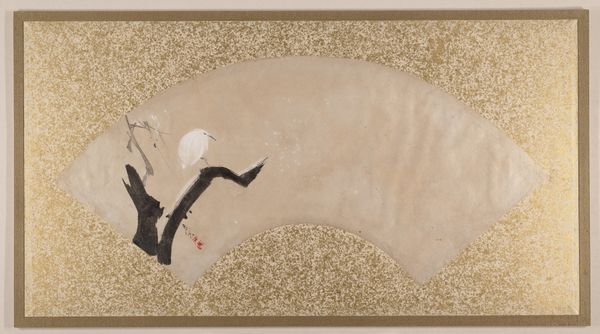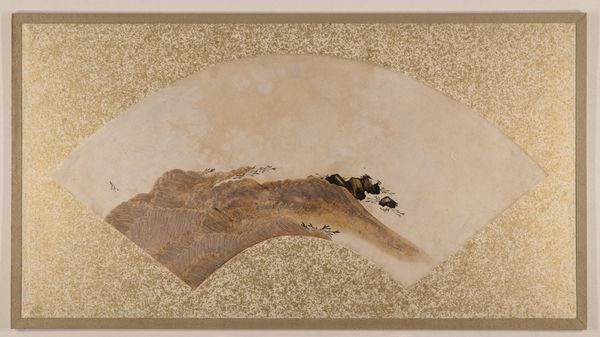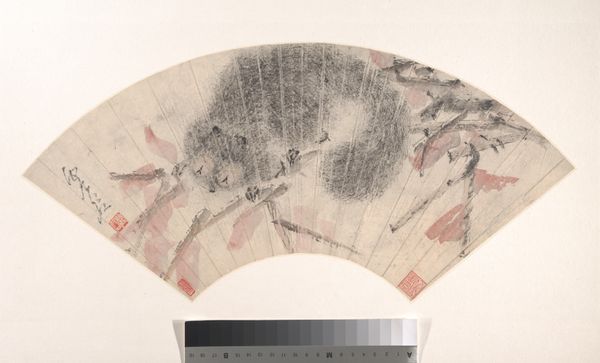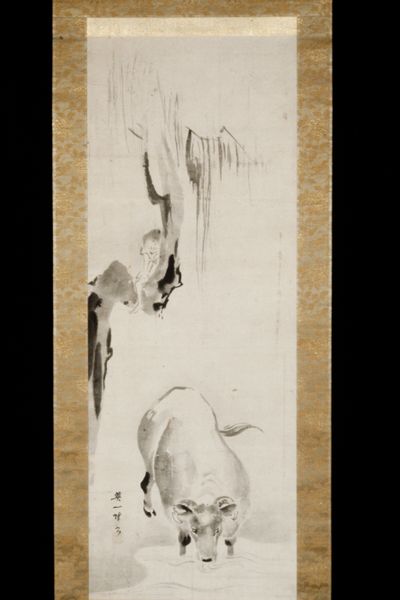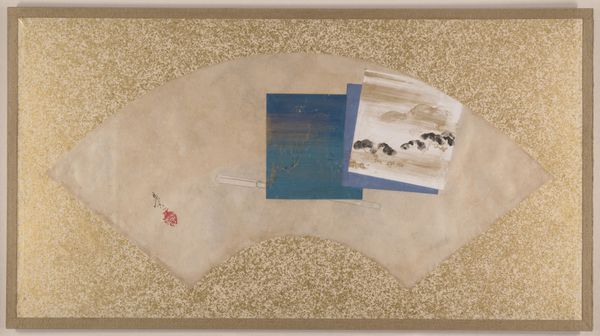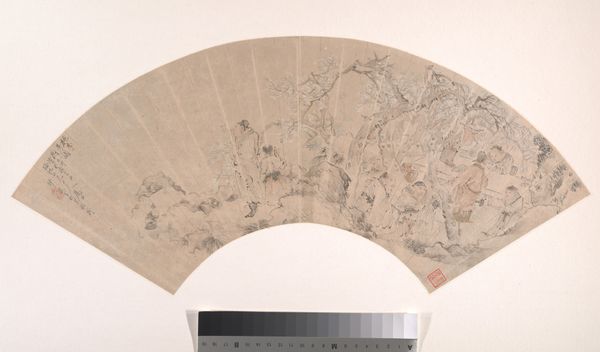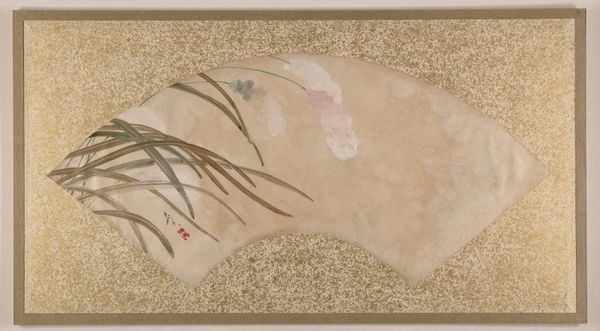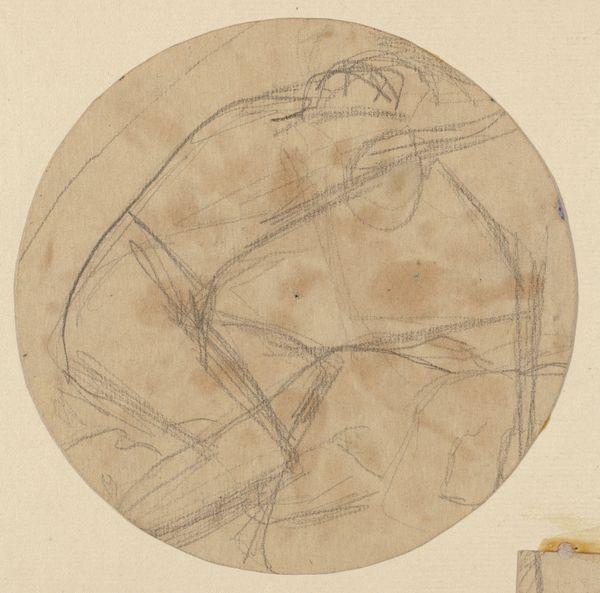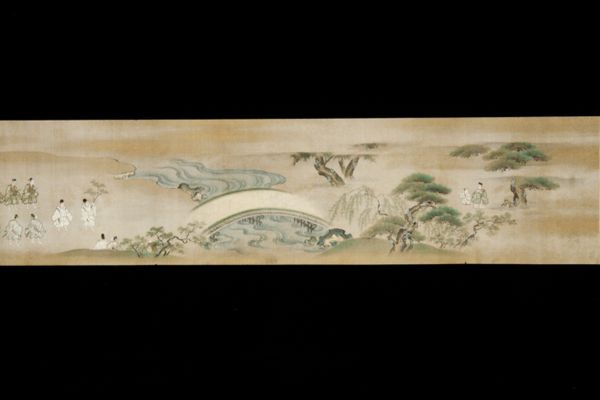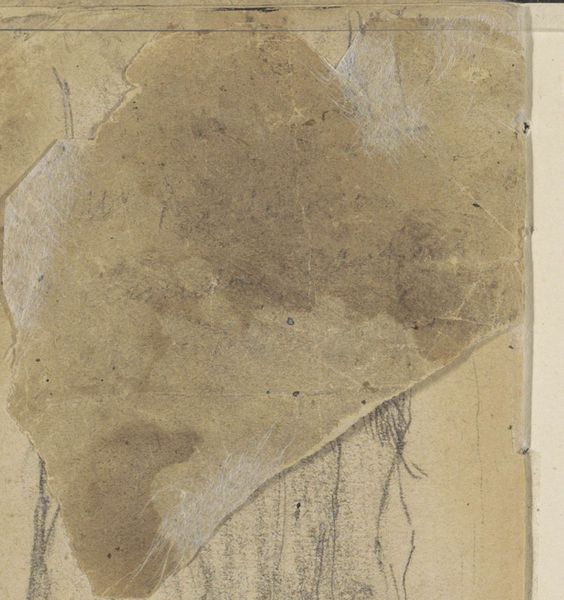
Dimensions: Overall: 13 x 23 5/8 in. (33 x 60 cm) Image: 7 x 20 7/8 in. (17.8 x 53 cm)
Copyright: Public Domain
Editor: Here we have Shibata Zeshin's "Birds," likely made between 1867 and 1891, rendered in watercolor. What strikes me is how delicate the execution seems, and I wonder, what do you see in the piece? Curator: It's crucial to consider Zeshin's focus on lacquerware techniques translated to painting. The decorative quality you observe points to the commodification of art during the Meiji period; Zeshin adapted traditional Yamato-e themes for export. Think about the labour involved in producing the fan, preparing the pigments, and the market intended for such objects. Do you see this connection between 'high art' and the 'craft' of export goods? Editor: I hadn't considered that so directly, but looking at the detail in the birds, their plumage... it seems intended to appeal to a very particular taste, especially for someone not from Japan. It does feel designed, almost. Curator: Exactly! And what materials do you observe? Not just the pigments but the paper itself? Consider its source, its production. These "Birds" weren’t made in a vacuum; each element connects to broader economic and social networks. Zeshin skillfully navigated those channels. How might our understanding change if this were on silk instead? Editor: I suppose it would read very differently on silk! It would feel like an artwork with loftier intentions. On the paper it feels more immediate and maybe more accessible. Thinking about this painting in terms of its materials really opens it up. Thank you! Curator: Precisely. By investigating the material conditions of its creation, we move beyond just aesthetic appreciation and understand art as part of a complex production process, of labor and also of value itself.
Comments
No comments
Be the first to comment and join the conversation on the ultimate creative platform.
